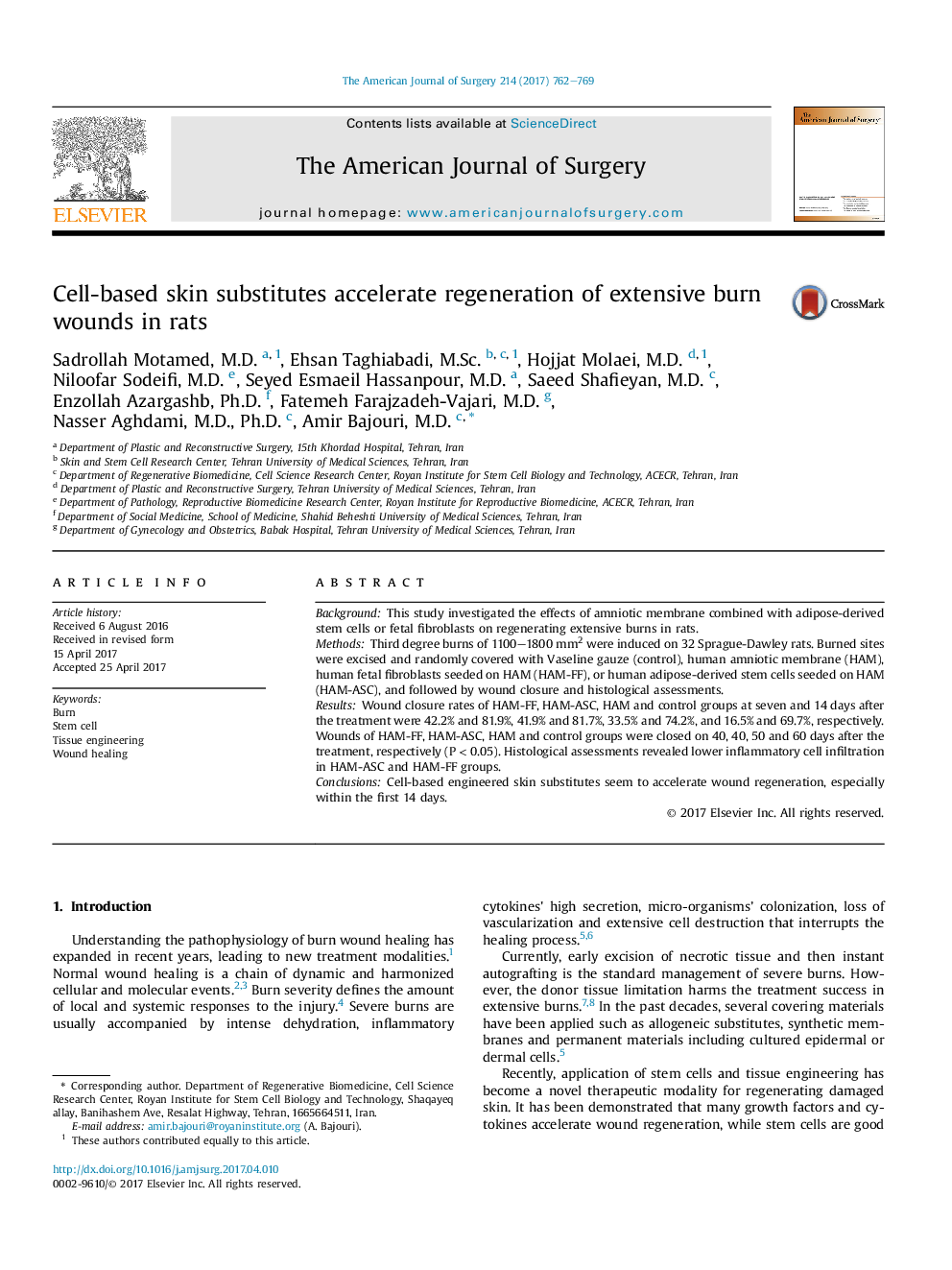| Article ID | Journal | Published Year | Pages | File Type |
|---|---|---|---|---|
| 5731229 | The American Journal of Surgery | 2017 | 8 Pages |
BackgroundThis study investigated the effects of amniotic membrane combined with adipose-derived stem cells or fetal fibroblasts on regenerating extensive burns in rats.MethodsThird degree burns of 1100-1800Â mm2 were induced on 32 Sprague-Dawley rats. Burned sites were excised and randomly covered with Vaseline gauze (control), human amniotic membrane (HAM), human fetal fibroblasts seeded on HAM (HAM-FF), or human adipose-derived stem cells seeded on HAM (HAM-ASC), and followed by wound closure and histological assessments.ResultsWound closure rates of HAM-FF, HAM-ASC, HAM and control groups at seven and 14 days after the treatment were 42.2% and 81.9%, 41.9% and 81.7%, 33.5% and 74.2%, and 16.5% and 69.7%, respectively. Wounds of HAM-FF, HAM-ASC, HAM and control groups were closed on 40, 40, 50 and 60 days after the treatment, respectively (PÂ <Â 0.05). Histological assessments revealed lower inflammatory cell infiltration in HAM-ASC and HAM-FF groups.ConclusionsCell-based engineered skin substitutes seem to accelerate wound regeneration, especially within the first 14 days.
